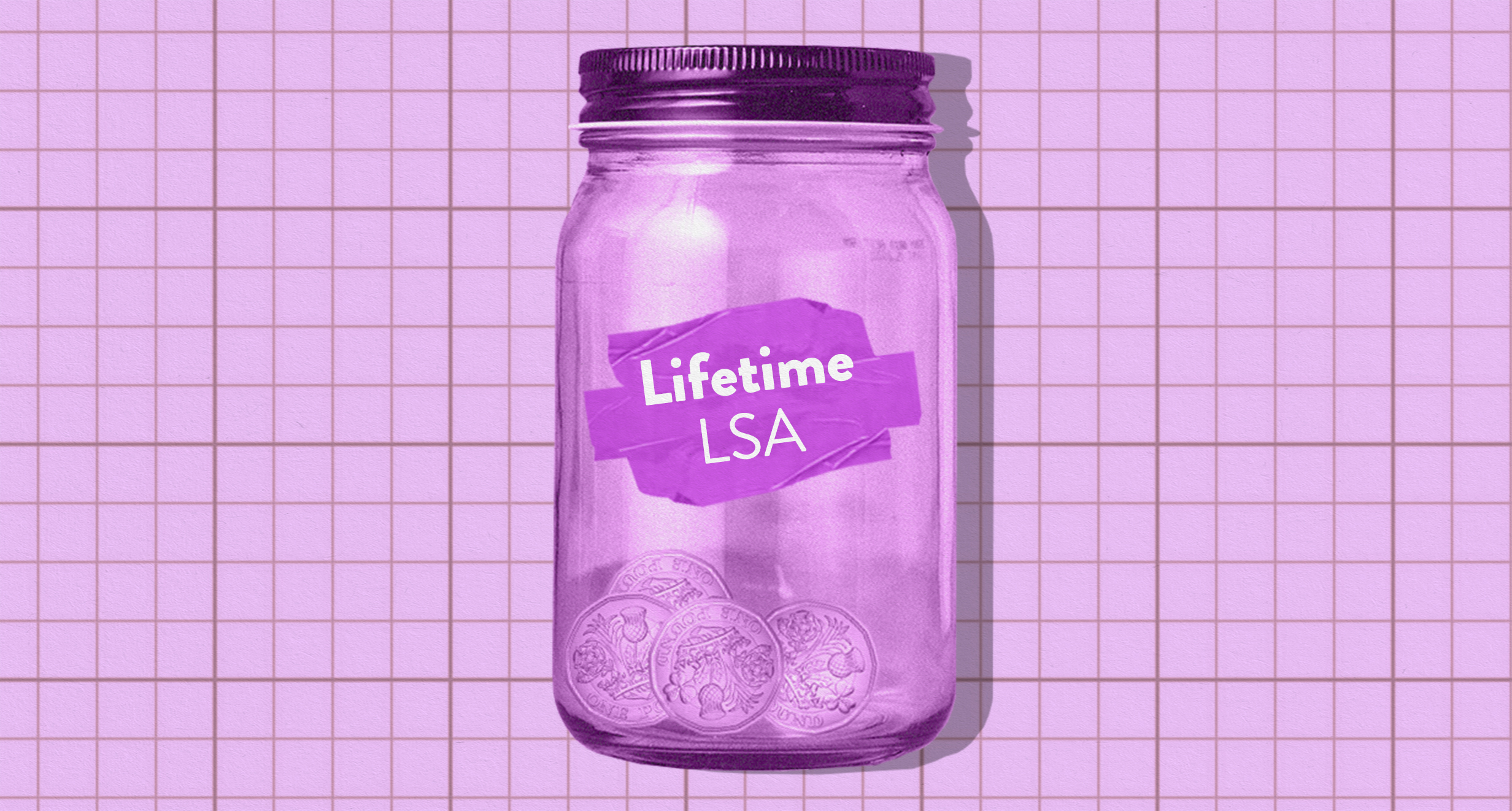Lifetime ISA explained
A 5 minute read

There’s more to saving than just sticking money under a mattress. You know that by now. That’s what a pension is, after all. A savings account designed exclusively for retirement.
A Lifetime ISA, meanwhile, is a savings account designed for buying a home. But it can be a pot of extra money when you turn 60. Just like a pension.
What is it?
A Lifetime ISA (LISA) is an Individual Savings Account that lasts a lifetime. Or, until you need it.
There are two types of LISA: a stocks and shares ISA, or a cash ISA.
You can use a LISA to save £4000 each tax year towards your first home, which is why it’s such a popular option with young people looking to claim a rung on the property ladder. A cash ISA is more suited to this option.
Or you can use it as a savings vehicle, like a pension to access when you’re 60 or over. A stocks and shares ISA is more suited to long-term saving like retirement.
Sounds a lot like a Help to Buy ISA, doesn’t it?
It does. But there are some fundamental differences that actually make them, well, fundamentally different.
For starters, the Help to Buy ISA isn’t a thing anymore. You can’t open one, so unless you signed up when it was active, you’ve missed the boat. But all is not lost, because a LISA is very much alive and kicking.
Other key differences are:
- A LISA can be invested in stocks and shares, whereas a Help to Buy ISA is only invested in cash deposits.
- A Help to Buy can be withdrawn at any time. Your LISA can only be used for buying a home or retirement – and there are penalties for jumping ship.
- Both benefit from a Government bonus, but the 25% top up works differently.
- You must be aged between 18-39 to open a Lifetime ISA.
- You can continue to put money into the LISA until the day before your 50th birthday (once you're 50 or over you'll continue to get interest or investment growth/losses but you won't be able to pay in any more).
- You need to have had a LISA open for a year to be able to use it towards your first home.
How it all works
Once you’ve signed up and opened an account, you can deposit up to £4,000 every tax year.
On top of your contributions you’ll get a 25% Government bonus, up to £1,000 per tax year.
That’s £1,000 for free, by the way.
And you earn investment returns or interest after that.
Which is all – get this – tax-free.
So, for example, if you save £4,000 a year for 2 years, you’ll gain £2,000 as a free Government top-up, leaving you with £10,000 before investment growth.
Do remember the all important message when it comes to investing: the value of your investments can fall as well as rise, and you could get back less than you invest. Tax rules can also change in future.
Is there a catch?
There’s always a catch. And it’s no different with a Lifetime ISA.
It’s designed for helping first time buyers. But that first home must be in the UK and worth no more than £450,000. Anything more, and you’ll have to pay a penalty to access your money.
You must also buy the property at least 12 months after you make your first payment into the Lifetime ISA.
If you withdraw cash or assets for any other reason, other than buying your first home, or for retirement if your aged over 60, you’ll be charged 25% of the withdrawal, (a reduced withdrawal charge of 20% was temporarily introduced from 6 March 2020 to 5 April 2021) which sounds like you’d just lose the government bonus you’ve accrued over the years.
But you’ll also forfeit some of the precious growth.
It seems unfair – what if your circumstances have changed? What if you’ve had a family since you opened the account and need a larger house? And because you can’t use your LISA as a cash buyer, and the mortgage can’t be a buy-to-let deal, the Catch is all the sneakier.
There have even been calls to reform the LISA rules after there was a rise in people being charged withdrawal penalties by 17% in 2022.
With the cost of living crisis still hitting our wallets like a barrage of waves hitting a storm wall, the last thing we need is being caught out by the catch.
Of course, you can always wait and use the LISA as a pension. But, be warned: a LISA is designed to boost your retirement savings, not to replace pensions.
Is the grass greener?
If you decide that your LISA provider isn’t a good fit (maybe your investment priorities have changed, or you want to find a provider with lower fees), then you’ll be glad to know that you’re not tied down.
You can transfer your LISA to another provider, or open a new one entirely (in addition to your existing account).
Just remember, you need to be between 18 and 39 to open a LISA - and some providers may even enforce this if you’re transferring. As ever, it pays to do your homework before making any big decisions.
What about a regular ISA?
You might have just opened a LISA, but don’t want to feel locked-in to the withdrawal parameter of either a £450,000 home or retirement. Fair enough.
So maybe you decide to open a regular ISA to stick anything left over in.
The good news is that you can open both a LISA and ISA in the same tax year. The overall ISA limit is £20,000 in the 2023/24 tax year. You are allowed to split this between a LISA (up to the maximum £4,000) and put the remainder in a cash ISA or stocks & shares ISA in the same tax year.
Just remember, Regular ISAs don’t come with a bonus.
Some providers will let you transfer money from your existing ISA into your Lifetime ISA, but it’s important to make sure before you sign up.
Quickfire Quiz
Think you picked all that up? Let’s find out!
- A Lifetime ISA is available to people of all ages: TRUE or FALSE?
- The government provides an unlimited tax-free top up of 25% every time you contribute. TRUE or FALSE?
- The property you use your LISA to purchase can be worth no more than £450,000. TRUE or FALSE?
- If you wait to use your LISA as a retirement fund, you have to wait until you stop work. TRUE or FALSE?
Answers
- FALSE
- FALSE
- FALSE
- FALSE

